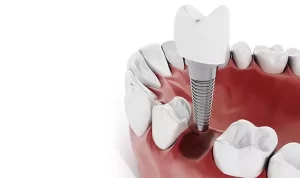Implant Treatment in One Day
Advances in the field of dentistry allow the treatment processes to be more painless and to be completed in a short time. Implant treatment, which is very important in terms of dental health and aesthetics, is one of the treatments that leaves question marks in mind. However, implant treatment can now be performed much more easily and painlessly with new techniques and especially 3D planning. The planning and preparation part of the treatment at the starting point is extremely important.
Safe implant planning and placement is one of the most important developments in dental implantology. Planning, surgical operation and prosthetic restoration in implant treatment constitute the progressive treatment steps. In the three-dimensional planning protocol, the treatment process proceeds in the order of animated prosthetic restoration, operation and planning. This means planning the locations, sizes and number of implants on the patient’s finished prosthesis. In this way, planning errors that may occur in the prosthesis can be eliminated at the beginning of the treatment.

No Room for Error with Implant Treatment
The planning made on the images obtained by processing the images taken from digital tomographs in computer programs minimizes the mistakes that the surgeon will make during the surgical procedure. Implant lengths and other markings are checked at the planning stage, and the location, angle and depth of each implant are meticulously planned.
The computerized imaging program SimPlant system, which is based on digital tomography images, enables the planning of implants in a three-dimensional environment by evaluating bone quality. The length of each implant is determined depending on the amount of bone. If the person’s mouth and jaw anatomy is suitable, all implants can be selected in the same size.
Good perspective for a good smile!
What is Scanning Prosthesis?
The scanning prosthesis is a necessary anterior prosthesis for planning the positions of the implants to be placed in the finished prosthesis in a computer-simulated jaw model. With this prosthesis, it is extremely easy to determine the position, number and size of the implants relative to the final prosthesis. It is also possible to determine and change the inclination of the implants relative to each other.
Scanning Prosthesis Advantage
One of the most important advantages of the scanning prosthesis is that it provides a good perspective on aesthetic needs. Since the scanning prosthesis allows to see the tooth alignment of the permanent prosthesis to be made, implants are planned in line with these images. Based on the scanning prosthesis and digital tomography, a bridge is established between the aesthetic demands of the patient and the existing biological structure in planning.

In the digital tomography images obtained with the scanning prosthesis, the regions where the implants will be placed are determined. Thus, the type of permanent prosthesis to be made after surgery is clarified. Since the scanning prosthesis prepared from the temporary prosthesis is prepared in accordance with the vertical dimension and smile line of the patient, the space to be restored after implant placement can be seen on the computer.
No Pain and No Incision in Digital Implants!
Thanks to the process called “punching”, implantation can be performed without removing the surgical guide. A special bur designed for this purpose is used. Based on the planning, the process for the osteotomy begins with the pilot drill. The milling process is continued without removing the tubes until the final milling is reached. After removing the milling tubes, the implants are placed over the guide so that there is no incision or bleeding.

